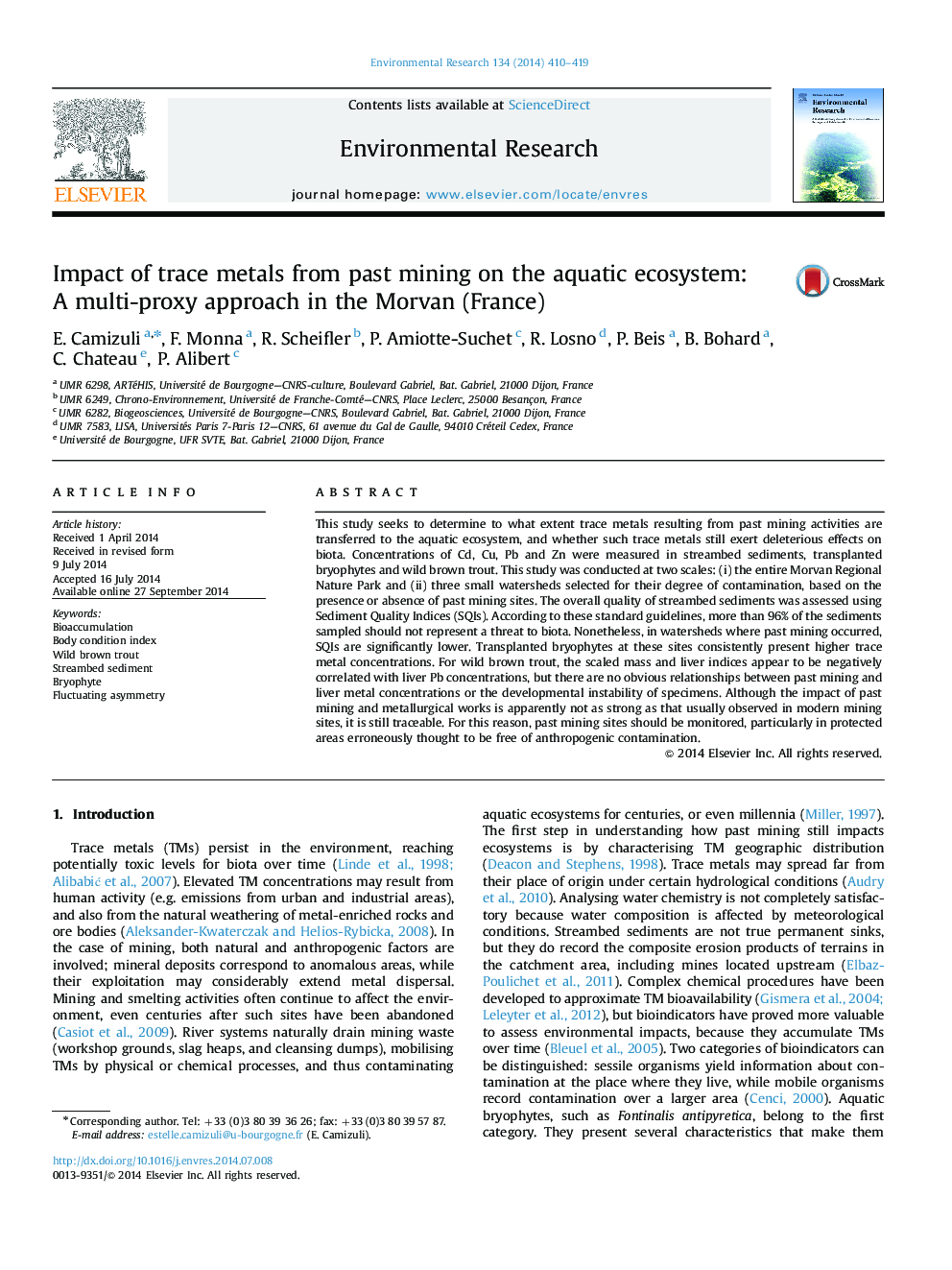| Article ID | Journal | Published Year | Pages | File Type |
|---|---|---|---|---|
| 6352458 | Environmental Research | 2014 | 10 Pages |
Abstract
This study seeks to determine to what extent trace metals resulting from past mining activities are transferred to the aquatic ecosystem, and whether such trace metals still exert deleterious effects on biota. Concentrations of Cd, Cu, Pb and Zn were measured in streambed sediments, transplanted bryophytes and wild brown trout. This study was conducted at two scales: (i) the entire Morvan Regional Nature Park and (ii) three small watersheds selected for their degree of contamination, based on the presence or absence of past mining sites. The overall quality of streambed sediments was assessed using Sediment Quality Indices (SQIs). According to these standard guidelines, more than 96% of the sediments sampled should not represent a threat to biota. Nonetheless, in watersheds where past mining occurred, SQIs are significantly lower. Transplanted bryophytes at these sites consistently present higher trace metal concentrations. For wild brown trout, the scaled mass and liver indices appear to be negatively correlated with liver Pb concentrations, but there are no obvious relationships between past mining and liver metal concentrations or the developmental instability of specimens. Although the impact of past mining and metallurgical works is apparently not as strong as that usually observed in modern mining sites, it is still traceable. For this reason, past mining sites should be monitored, particularly in protected areas erroneously thought to be free of anthropogenic contamination.
Related Topics
Life Sciences
Environmental Science
Health, Toxicology and Mutagenesis
Authors
E. Camizuli, F. Monna, R. Scheifler, P. Amiotte-Suchet, R. Losno, P. Beis, B. Bohard, C. Chateau, P. Alibert,
